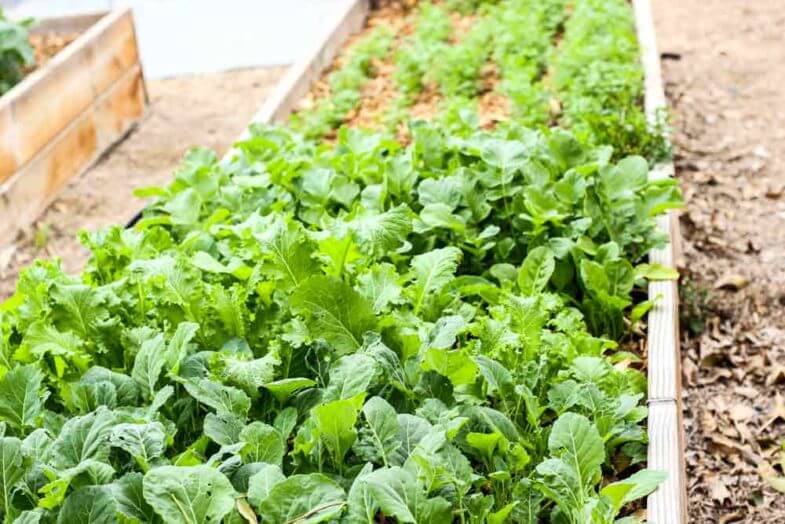
I truly believe that half the battle in gardening is…
choosing the correct location for your fruits and veggies.
For years I just planted wherever and prayed things would survive. A lot of times, things didn’t.
I’ve since learned to spot the various “microclimates” in my garden. Some plants LOVE the sun and can’t get enough of it. Very similar to my relationship to butter. Other plants need to cool off and get stressed out when they are forced to sunbathe all day. Man, I don’t blame them!
Just in my little 500 sq. ft garden, I have areas of full sun, partial sun, and even full shade. I now know that there’s no way in hell my tomato plants will grow in the full shade section. Nope, that little spot is reserved for my spinach, which is happy as a peach in that cooler location.
Planning your garden.
First things first: Take a few days and notice areas that are have more sun and areas that have more shade. Make a drawing of your garden and then mark the different areas. That will help guide a lot of your decisions.
Whether you’re sowing your seeds directly into the ground or you’re going the raised garden bed route, this process is the same. We’ve done both in-ground planting and raised garden beds, and it’s a very similar planning process.
The best vegetables and fruits for FULL SUN:
Full sun means you’ve got a good 6-8 hours shining down in this area. The following plants thrive in full sun.
- Cucumbers
- Squash
- Watermelon
- Cantaloupe
- Eggplant
- Tomatoes
- Peppers
- Corn
The best vegetables and fruits for PARTIAL SUN:
Partial sun means that this area gets 4-6 hours of sunlight. Many times an area will get morning sun and afternoon shade, which is great for summer because it gives the plants a break during the hot summer sun. This is what that works best for:
- Beans
- Peas
- Beets
- Broccoli
- Cabbage
- Onions
- Leek
- Radish
- Rutabaga
- Turnips
The best vegetables and fruits for FULL SHADE:
Full shade means that these get only about 2-4 hours of sunlight. Most of it can be from a diffused light from an adjoining tree.
- Kale
- Arugula
- Endive
- Lettuce
- Spinach
- Mustard greens
- Swiss Chard
- Brussels Sprouts
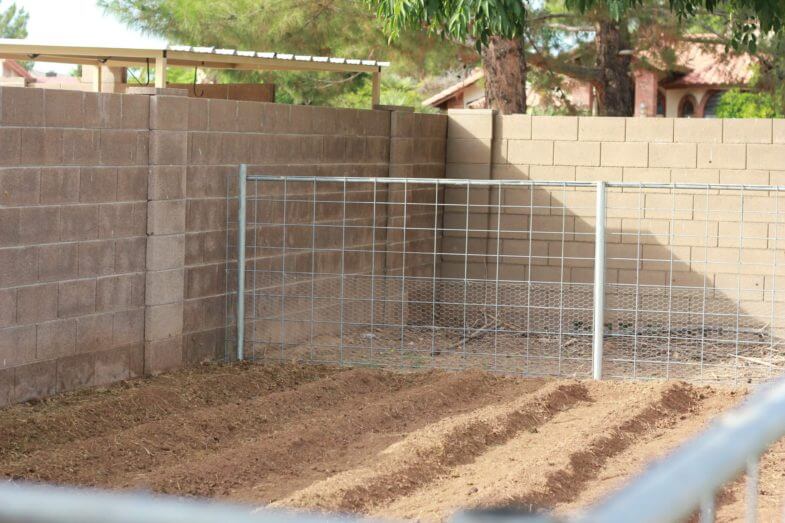
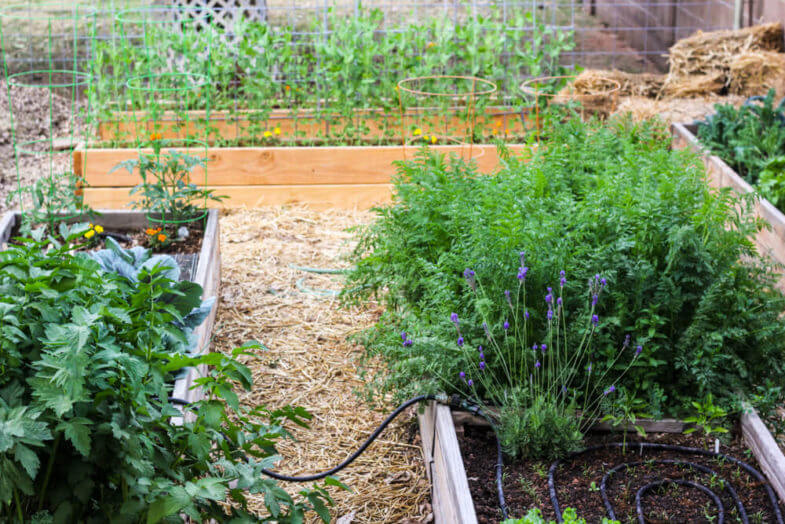
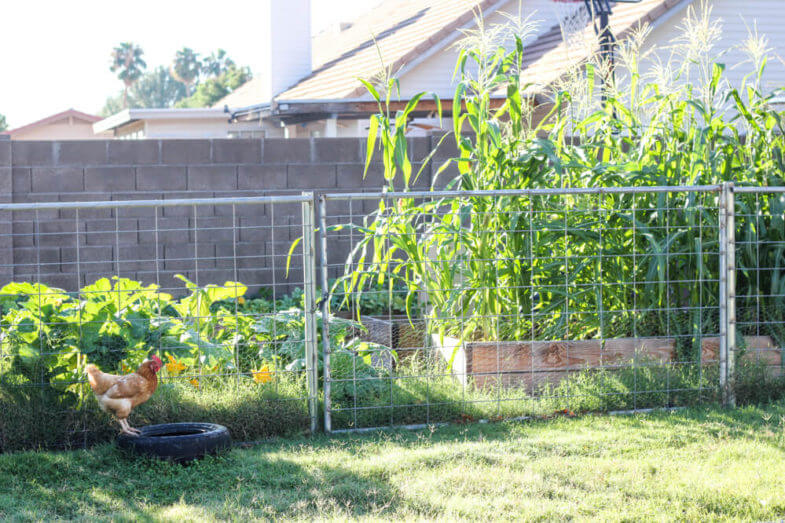
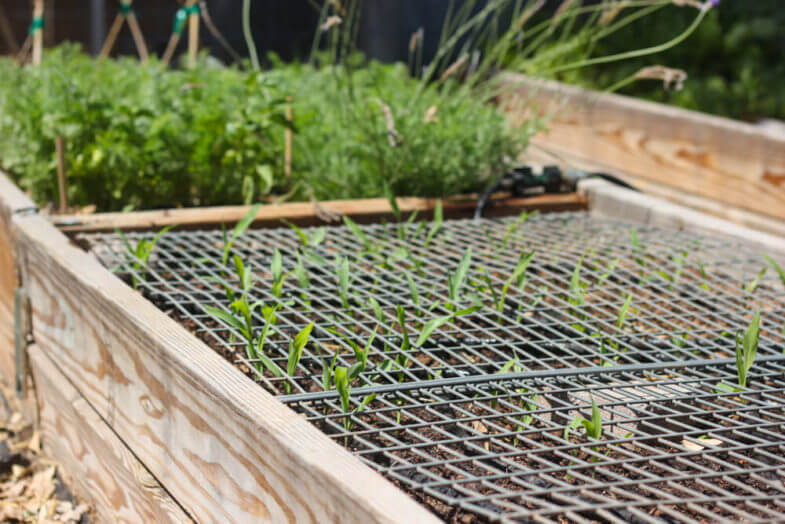
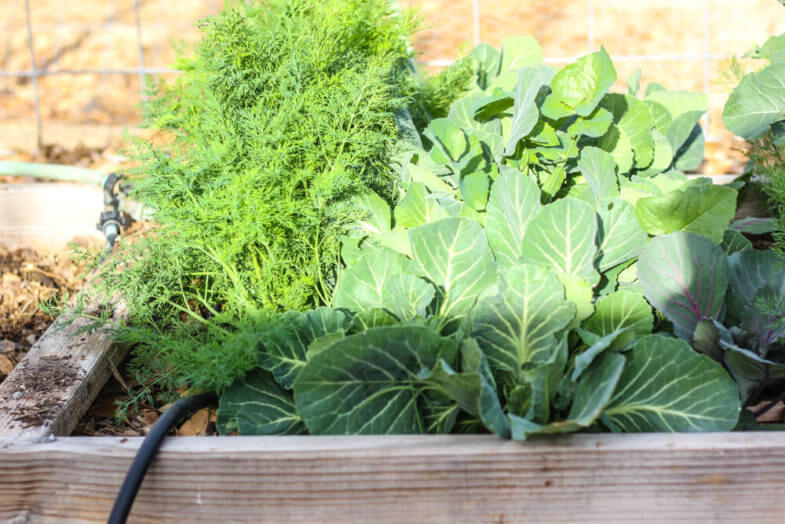
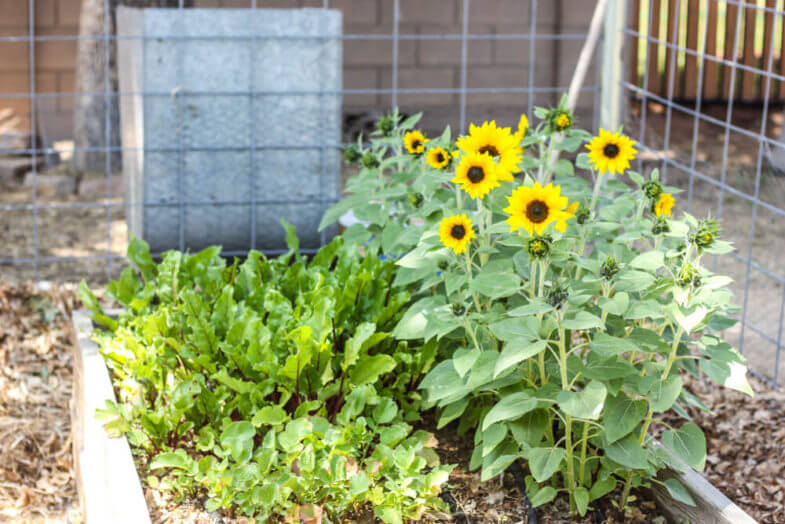
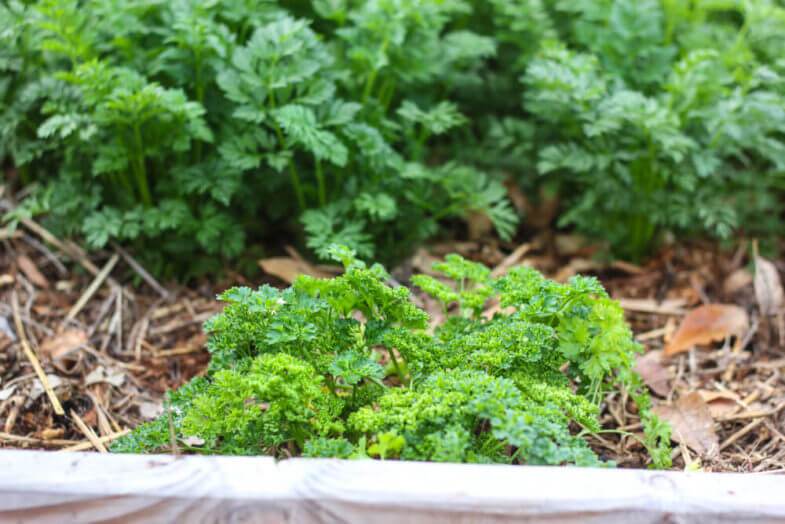
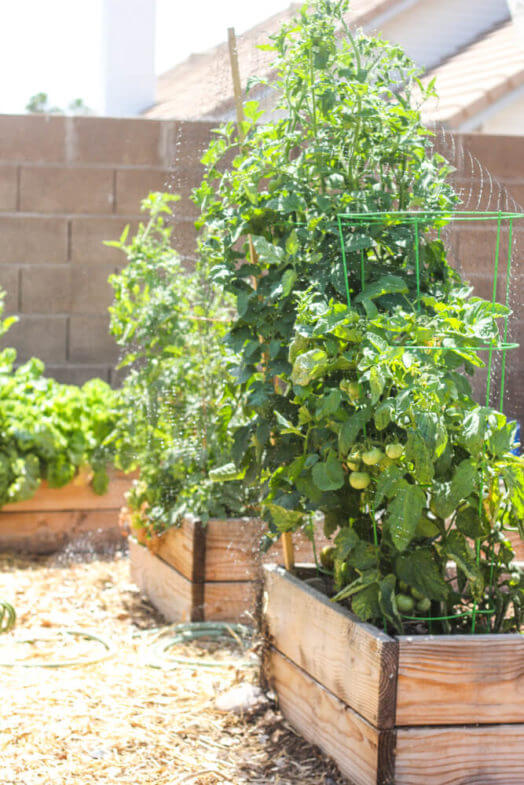
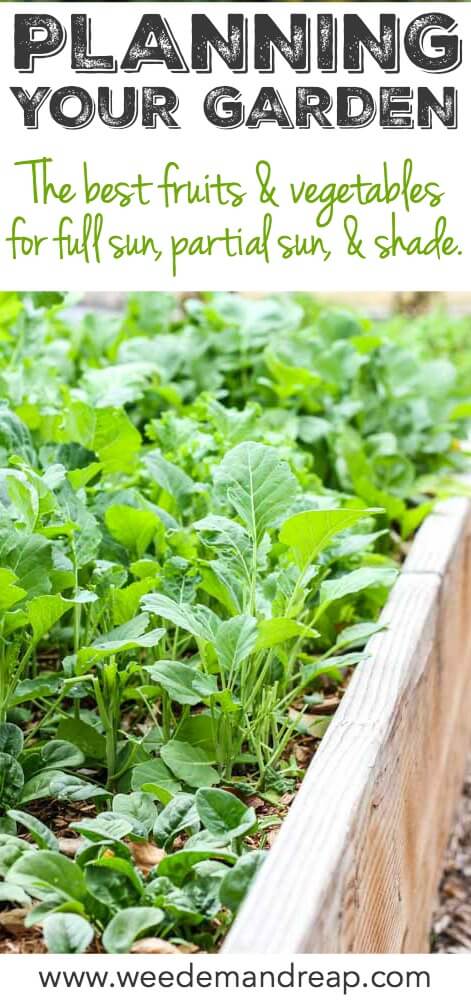

Hey DaNelle! Thanks for the great tips! I am very excited for this years gardens!
Have a good day!
thanks for the great info. I have just one question, the way you have clasified every thing for full and part shade, will this be true for central N.C. also?
Hi Aaron-
No, this may not be the same for North Carolina. Many plants in areas of high altitudes and extreme summer temperatures need shelter from the sun. It would be best to talk to the Master Gardners from your local County Extension Office to find out what grows well in your area and how it should be planted.
I hope that helps!
Thank you -Bobbi (DaNelle’s Assistant)
Hi DaNelle,
Do you have a listing or chart of which vegetables you plant at what time of year and which ones you plant together (and those that shouldn’t be together)?
We live in a climate very similar to yours and I need help with this. My garden this past summer was very hit/miss – got lots of peas and green beans, but no tomatoes, cucumbers or peppers. I’ve never had a green thumb (I am pretty much capable of killing anything – including bamboo!). So, I need all the help I can get.
Thanks!
Hi Cindy-
This article from DaNelle should help: https://www.weedemandreap.com/starting-vegetable-garden/
Under #5 there is a link to the AZ Extension that gives a great chart.
Here is DaNelle’s other article on companion planting, with chart included in the article, that should be useful to you: https://www.weedemandreap.com/companion-planting-made-easy-peasy/
I hope that helps! Best of luck and Happy Gardening!
Thank you -Bobbi (DaNelle’s Assistant)
Brussels sprouts like shade??? That’s not what the seed packet says!
Hi John-
Many growers will tell you Brussels sprouts need full sun and that is correct. Although, in high desert climates cool season vegetables appreciate quite a bit of afternoon shade so they don’t get fried from the sun and higher altitudes.
I hope that helps!
Thank you -Bobbi (DaNelle’s Assistant)
This may be irrelevant to this comment section but I’m sure you are willing to help me! I have begun a garden and I love it already even with the slightly small amount of food I grow. I would love to grow carrots, but I am scared that since I am a beginner I will pluck out a carrot and it will be small and puny. I know that I could grow big bunches of food to prevent that somewhat, but my garden is a small 4 by 4 garden box. I may get another garden box and then I will plant the carrots there with some other plants. Do you have any tips, thanks so much!
Hi Lauren-
Most variety of carrots are ready to harvest 60-75 days after planting. You can begin about that time and pull one or two carrots to see their size. You don’t want them to grow beyond 1 inch in diameter, as they lose flavor then. Usually you want carrots about 1/2 – 3/4 inch. Even if you pull carrots and they are small they are still edible and delicious. Plus thinning out your carrots is recommended because crowded carrots do not grow as well. So just pull them when you think it’s time and they will be fine. I hope that helps and you have a great carrot crop! Thank you -Bobbi (DaNelle’s Assistant)
I have had a very large garden (an acre) for many years. My problem lies within someone else planting my garden for me and not listening to what i want. Then they abandon the garden in July….and I am left to tend to the WHOLE thing. Last year, the fence they made was breached by a dozen chickens and four roosters. THIS YEAR, I AM PUSHING myself to be HEARD. If I have to take complete care of it, I NEED it planted to my specifications. So any input you have regarding weed barriers, I would appreciate hearing about them. Also, your thoughts on the watering aspect. I am OLD School. We made trenches and flowed water down them. My husband has installed a water line “sprinkler” (drooler is more like it) system to each and every plant and does that every year. All that does is make the weeds grow right there at the base root of the vegetable and STRANGLES the hell out of it and kills them. Is there a happy medium? A compromise? involving the watering? Can those kinds of systems be used EFFECTIVELY through different placement? Or should it be sacked and do something else? I have no problem hand watering every day. What’s the best way? (yes, the “person” is my stubborn husband. Asks my opinion and/or what do I WANT?…, then does what he wants anyways, AND abandons it later on, so what is the point, really?)
I am not as sick as I was, So I am really digging my heels in for what I want, plus I can do it my damn self if I HAVE to.
Thanks in advance for any advice.
The new 6 ft fence is being built now, as after the chickens wiped out the garden last year, I abandoned it. I could not build a fence on top of the 2 footer he put in ….yes, 2 feet,…to keep CHICKENS (Foul that are SEMI-flightless) OUT!! ha ha ha
geesh!
So question: I have pretty much being reading, oh, you know–every article on starting a garden that you’ve posted–and wanted to know more about gardening for different seasons. You mentioned all the veggies you are planning on harvesting for each season; so do you reserve different garden boxes for, say, autumn root vegetables, or is it more like a summer veggie finishes its cycle/season and then you start the next season in its place??
My small backyard is in north east of our house. I got all three kinds of sun light (full, partial and shade). Thanks for this excellent article.
“Some plants LOVE the sun and can’t get enough of it. Very similar to my relationship to butter.” Story of my life! Funny and informative as always! This motivates me to get going on my summer garden. Though this may be tricky in northern WI. Our growing season is extremely short compared to AZ. Thanks for the great tips!
Haha! I’m glad you understand the struggle!